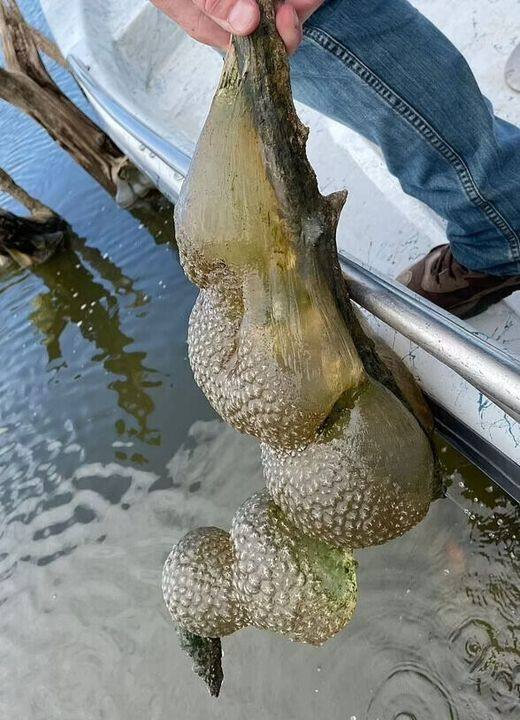Bryozoan clumps are not eggs or single animals but consist of hundreds of creatures banded together. The pods, known as zooids, are each a fraction of a millimeter long. They lack respiratory or circulatory systems, but their central nerve ganglion allows them to respond to stimuli.

These pods, hanging from tree roots, help clean the lake.
The tiny invertebrates possess both male and female reproductive organs, allowing them to self-clone and spread through clumps of cells called statoblasts.
Each statoblast can reproduce asexually by breaking off from a colony, enabling rapid reproduction if conditions are suitable. The animals consume phytoplankton and bacteria in the water.
Fossil records suggest bryozoans evolved from ancient marine worms, with their ancestors dating back as far as 470 million years, whereas dinosaurs appeared around 245 million years ago.
The Oklahoma Department of Wildlife Conservation (ODWC) shared photos on social media. “What is that??? If you’re out boating somewhere like McGee Creek Reservoir, you may notice these strange jelly-like balls hanging from submerged tree limbs,” the post begins.
“These are Bryozoans, and they’ll likely show up in large numbers this summer. Don’t be alarmed; these microorganisms are native and pose no danger to you or wildlife. In fact, they indicate good environmental quality and clear water!”

